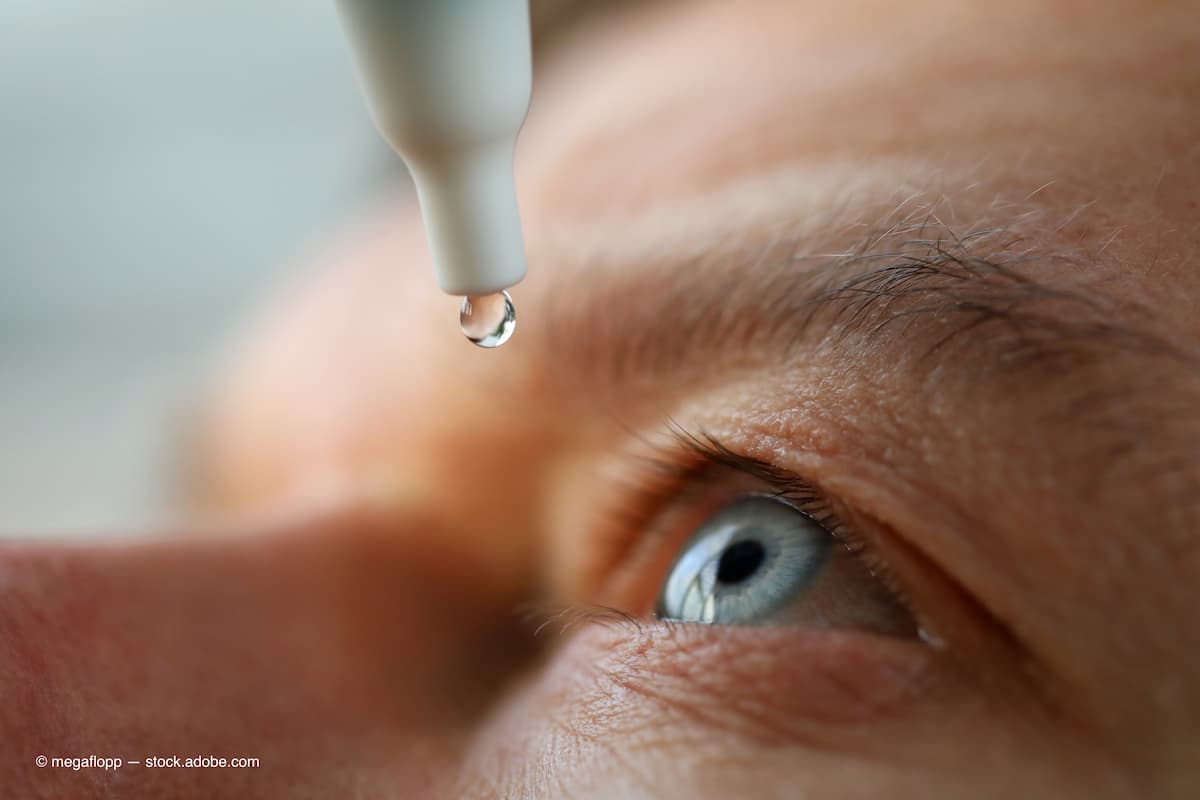Phase 1 device vs. drug SAHARA results
TearCare provides significant improvements in dry eye signs and symptoms, superior to Restasis in tear film break-up time improvements.
The phase 1 results of the SAHARA study, a randomized controlled trial, showed that TearCare technology surpassed the effects of Restasis 0.05% (cyclosporine ophthalmic emulsion, Allergan), a prescription eye drop treatment, regarding the primary endpoint, the changes in the tear film break-up time (TBUT). (Adobe Stock / megaflopp)

Sight Sciences announced successful 6-month, phase 1 results from the SAHARA clinical trial at the American Academy of Optometry annual meeting in New Orleans. Marc R. Bloomenstein, OD, FAAO, Director of Optometric Services, Schwartz Laser Eye Center, and a Principal Investigator for the SAHARA clinical trial, reported the results on behalf of the company.
According to the company’s recent press release, the “interventional eyelid procedures enabled by TearCare technology successfully delivered clinically and statistically significant improvements in every sign and symptom measured at every time point through 6 months.”
The phase 1 results of the SAHARA study, a randomized controlled trial, showed that TearCare technology surpassed the effects of Restasis 0.05% (cyclosporine ophthalmic emulsion, Allergan), a prescription eye drop treatment, regarding the primary endpoint, the changes in the tear film break-up time (TBUT). This parameter reflects the aqueous retention, tear film stability, the tear film ability to protect the ocular surface. TearCare was shown to improve the TBUT at all measurement time points (1 week and 1, 3, and 6 months).
The study’s secondary endpoint, the subjective outcomes reported by patients as measured by the Ocular Surface Disease Index, indicated that TearCare and Restasis provided “comparable clinically and statistically significant improvements at every time point measured based on the OSDA score, according to Sight Sciences’s press release.
The TearCare System is designed to apply localized heat therapy to treat adults with evaporative dry eye disease resulting from meibomian gland dysfunction. The system is used in conjunction with manual expression of the meibomian glands.
“Pharmaceutical intervention with Restasis has been the hallmark of dry eye treatment since its introduction. The results of the SAHARA randomized clinical trial using TearCare technology, which treats the root cause of dry eye disease, should make us rethink our options for the optimal treatment for dry eye,” Bloomenstein, said, in commenting on the results.
He continued, “Knowing that we can achieve superior dry eye results with a procedure that also reduces concerns for daily prescription eyedrop patient compliance and adherence should make my colleagues in eyecare, as well as insurance providers, consider providing our patients access to TearCare as an efficacious and durable interventional dry eye treatment.”
Phase 1 results
The trial included 345 subjects and was conducted at 25 sites in 14 states. The participants were randomized 1:1 between treatment with TearCare and Restasis.
The analysis of the TBUT showed that TearCare achieved significant improvements that increased from a 1.5-second improvement compared with baseline at 1 week to a 2.5-second improvement from baseline at 6 months.
TearCare was also superior to Restasis in the underlying health of the meibomian glands, including meibomian gland secretion score, the number of glands yielding any liquid, and the number of glands yielding clear liquid.
Regarding the corneal and conjunctival health improvements seen on corneal and conjunctival staining, both treatments achieved comparable significant improvements at all time points.
The results of Schirmer testing indicated that both treatments achieved significant improvements in tear production and significant clinical improvements in the subjective measures of the severity of dry eye disease, the OSDI scores, Symptoms Assessment in Dry Eye scores, and Eye Dryness Scores.
In addition, the investigators also pointed out that, “Traditional therapy for dry eye disease (typically eyedrops) is reliant on patient adherence for effectiveness but patients often do not adhere to their eyedrops at the specified frequency.1 In this study as in many clinical trials,2 subject adherence to drop therapy was very good (not typical of “real-world” behavior) and used an average 5.7 bottles over 6 months. TearCare does not rely on patient adherence, thus outcomes reported here should be similar to real world use.”
Paul Badawi, Co-Founder and Chief Executive Officer of Sight Sciences, said, “We are extremely pleased with the successful six-month results of the SAHARA randomized clinical trial. The data from this trial support our belief in the clinical superiority of interventional eyelid procedures enabled by TearCare technology versus the most commonly prescribed dry eye therapeutic.”
The details of the full presentation can be accessed using the link: https://ssi.onl/sahara
References
Uchino M, Yokoi N, Shimazaki J, et al. on behalf of the Japan Dry Eye Society. Adherence to eye drops usage in dry eye patients and reasons for non-compliance: a web-based survey. J Clin Med. 2022; 11: 367; https://doi.org/10.3390/jcm11020367
Osterberg L, Blaschke T. Adherence to medication. N Engl J Med. 2005; 353:1972-1974.
Newsletter
Want more insights like this? Subscribe to Optometry Times and get clinical pearls and practice tips delivered straight to your inbox.